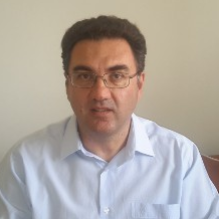Environmental Remediation via Metal-Oxides-Mediated Heterogeneous Photocatalysis
A special issue of Catalysts (ISSN 2073-4344). This special issue belongs to the section "Photocatalysis".
Deadline for manuscript submissions: closed (30 December 2023) | Viewed by 8802

Special Issue Editors
Interests: photocatalysis; artificial photosynthesis; solar fuels; the synthesis of advanced nanomaterials
Special Issues, Collections and Topics in MDPI journals
Special Issue Information
Dear Colleagues,
Over the last decade, the general public has become increasingly interested in environmental protection including cleaning air and water and also sustainable ways of producing energy. Access to clean water should not be taken as a given in any part of the world and the increasing atmospheric concentration of CO2 heavily affects Earth’s climate.
Since the pioneering work of Fujishima and Honda (A. Fujishima, K. Honda, Nature 238, 1972, 37–38), the field of photocatalysis has attracted the attention of the scientific community. An ever-increasing number of publications focus on using solar light efficiently both to degrade harmful gaseous (e.g., NOx) or liquid pollutants (e.g., pharmaceuticals in wastewater effluents) and to reduce atmospheric CO2 concentration.
In the field of photocatalysis, one family of materials stands out as the most studied: metal oxides. Metal oxides provide a unique selection of properties such as (but not limited to) low-cost and toxicity, high availability, semiconductivity, a great variety of synthesis processes and modification techniques, and tunable light-absorbing capabilities. Their most prominent drawback – a usually very large bandgap – can today be addressed synthetically by strategies such as doping or compounding.
Submissions to this Special Issue on “Environmental Remediation via Metal-Oxide-Mediated Heterogeneous Photocatalysis” are welcome in the form of original research papers or short reviews about the use of metal oxides in the following photocatalytic processes: CO2 conversion to useful products and platform chemicals; NOx reduction; degradation of emerging contaminants present in water; novel design of photocatalytic reactors; identification of kinetics, intermediates, and products from photocatalytic processes.
Dr. Nikolaos G. Moustakas
Dr. Fotis Katsaros
Guest Editors
Manuscript Submission Information
Manuscripts should be submitted online at www.mdpi.com by registering and logging in to this website. Once you are registered, click here to go to the submission form. Manuscripts can be submitted until the deadline. All submissions that pass pre-check are peer-reviewed. Accepted papers will be published continuously in the journal (as soon as accepted) and will be listed together on the special issue website. Research articles, review articles as well as short communications are invited. For planned papers, a title and short abstract (about 100 words) can be sent to the Editorial Office for announcement on this website.
Submitted manuscripts should not have been published previously, nor be under consideration for publication elsewhere (except conference proceedings papers). All manuscripts are thoroughly refereed through a single-blind peer-review process. A guide for authors and other relevant information for submission of manuscripts is available on the Instructions for Authors page. Catalysts is an international peer-reviewed open access monthly journal published by MDPI.
Please visit the Instructions for Authors page before submitting a manuscript. The Article Processing Charge (APC) for publication in this open access journal is 2700 CHF (Swiss Francs). Submitted papers should be well formatted and use good English. Authors may use MDPI's English editing service prior to publication or during author revisions.
Keywords
- Heterogeneous photocatalysis
- Environmental remediation using photocatalysis
- Photocatalytic CO2 reduction
- NOx reduction
- Emerging contaminants in wastewater effluents
- Metal oxides
- Novel photoreactor designs
- Kinetics in photocatalytic processes
- Identification of intermediates and products from photocatalytic processes
- Advanced oxidation processes (by photocatalysis)






